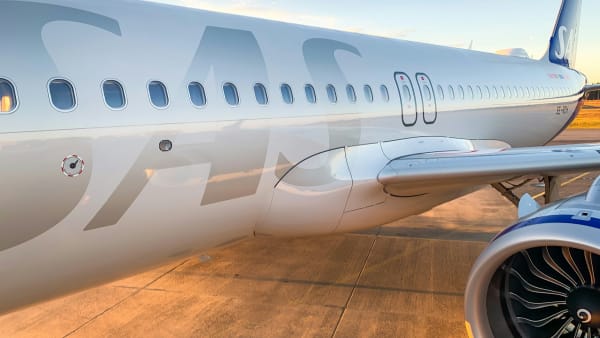Understanding the Basics of Aircraft Leasing and Financing
Leasing or financing aircraft is a crucial strategy both for airlines striving to maintain efficient operations and businesses seeking an advantageous edge. This process, however, can seem perplexing when approached without a solid understanding of its fundamentals. Therefore, this post delves into everything you need to know about Aircraft Leasing and Financing to help you navigate this complex world with more confidence.
The Concept of Aircraft Leasing and Financing
Aircraft leasing provides an alternative for airlines, businesses, and private operators that lack the means to buy aircraft outright. Instead, they lease the airplane for a defined period from a lessor, typically a third-party leasing company or bank. Think of it as the equivalent of renting an apartment; you can make use of the aircraft without actually owning it.
On the other hand, aircraft financing involves borrowing the necessary funds to purchase the aircraft. Similar to a mortgage, the lending institution extends this loan, secured by the aircraft itself, requiring periodic payments over an agreed-upon term.
The decision between leasing and financing, of course, hinges on various factors such as the operator's financial health, market conditions, and the airlines' fleet management strategy.
Benefits of Aircraft Leasing
- Flexibility: Leasing allows operators to update their fleet regularly to accommodate newer models or different aircraft types.
- Cost Efficiency: Steep purchase prices can be circumvented by leasing, which requires less upfront capital.
- Risk Mitigation: Depreciation and market volatility risks are passed on to the lessor.
Drawbacks of Aircraft Leasing
- Long-term Cost: Over time, leasing can cost more than owning, depending on the lease term and rates.
- Limited Control: Operators are beholden to the lessor's stipulations, which may limit what can be done with the airplane.
- Availability Constraints: The desired aircraft may not be available for lease at the time needed.
Benefits of Aircraft Financing
- Asset Ownership: Borrowers ultimately own the aircraft, which can serve as a significant asset.
- Tax Advantages: Interest on the aircraft loan can be deducted for tax purposes, and owners can take depreciation benefits.
- Greater Control: Owners enjoy unrestricted use and customization of the airplane.
Drawbacks of Aircraft Financing
- Higher Upfront Costs: A significant down payment is often required.
- Depreciation Risk: The aircraft's value may decline over time, particularly if it's not well-maintained.
- Long-term Commitment: This often involves a lengthy payback period, binding operators to the aircraft for an extended time.
Choosing Between Leasing and Financing
The decision to lease or finance essentially depends on the operator's specific needs and financial capabilities. Leasing might be favorable for players who prefer fleet flexibility and risk management, while financing might prove beneficial for those seeking asset ownership and tax benefits. As such, understanding the benefits and drawbacks offers the starting point from where operators can make an informed decision.
Types of Aircraft Leasing
Aircraft leases come in two primary forms: operating lease and finance lease (also known as a capital lease).
An operating lease typically lasts a shorter period, usually less than the aircraft's life span (think up to 10 of a plane's approximate 25-year serviceable life). Because there is no transfer of ownership, the airplane is returned to the lessor at the lease term's end.
On the flip side, a finance lease is a longer agreement, often pretty close to the expected life of the aircraft. At the end, the lessee has the option to purchase the aircraft at a reduced price. This lease transfers the aircraft's ownership risks and benefits to the lessee while the lessor retains official ownership.
The Aircraft Leasing Process
Assuming you've opted to lease, securing a suitable lease agreement entails several critical steps you need to follow:
- Identifying the Desired Aircraft: Your selection should reflect your business needs and operational requirements.
- Defining Budget: Determine your capable spending and expected costs for leasing and maintaining the aircraft.
- Finding a Lessor: Compare various lessors in terms of their reputation, fleet availability, rates, and lease terms.
- Negotiating the Lease Agreement: This encompasses discussions about lease length, rates, maintenance, and return conditions.
- Conducting a Pre-Lease Inspection: Before signing any contract, it's imperative to inspect the aircraft's condition to avoid unexpected maintenance costs down the line.
Financing an Aircraft: The Credit Application Process
Once you've decided to finance an aircraft, the credit application process typically involves:
- Submitting a Credit Application: The applicant provides financial information for a credit background check.
- Credit Assessment: The lender evaluates the applicant's ability to repay the loan.
- Loan Proposal: If approved, the lender outlines the loan terms.
- Contract Review and Execution: Upon agreeing to terms, formal contracts are prepared for both parties to execute.
- Settlement and Funding: The loan proceeds are released, and the aircraft’s purchase is finalized.
Key Takeaway
Bearing in mind the intricacies that arise when deciding between aircraft leasing and financing, a comprehensive grasp of these basics will equip you to make an optimal decision. One that's grounded in a thorough understanding of your unique situation, the trade-offs, and the operational factors involved. Remember, the ultimate objective is to pick a route that aligns best with your operational needs and financial constraints, bolstering your business's prosperity in the long run.




